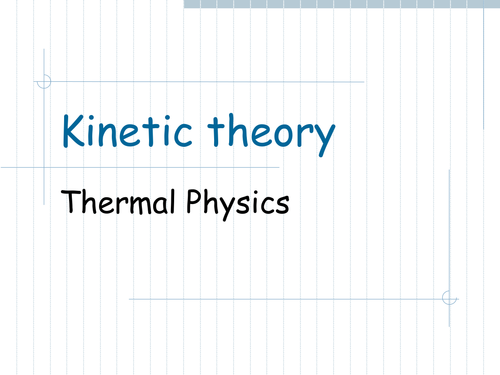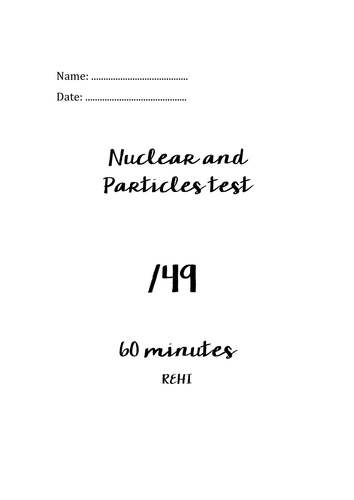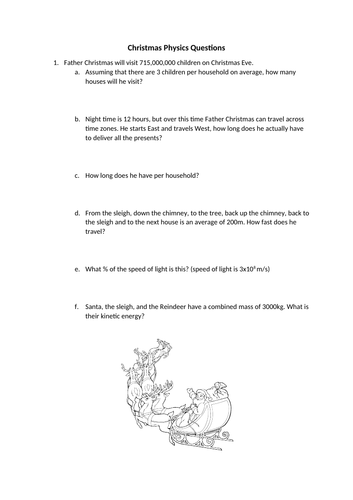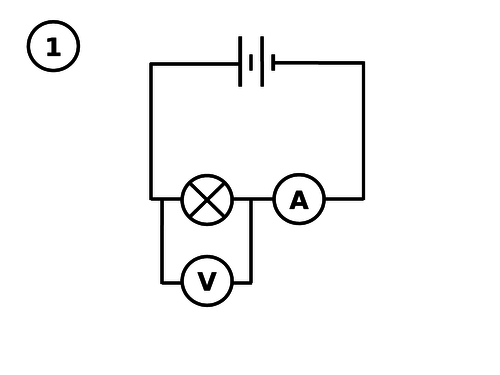
87Uploads
60k+Views
11k+Downloads
Physics

Kinetic theory of gases derivation
A powerpoint working through the derivation of pressure and kinetic theory equation of gases.
This can be quite complex, so the powerpoint works through step by step to make this easier.

Mass defect and binding energy
My lesson on mass defect and binding energy.
Talks them through the equation and how to use it.

Nuclear and Particle Physics test OCR KS5 A level
This is a 60 minute assessment made up of past paper questions from the OCR Physics A - H158, H558 course.

Energy and Electricity word loop game
Give each student a card. Each card has an answer at a the top, and a question at the bottom. One student reads out their question, and whoever has the answer reads out the answer and the next question. Keep going until you get back to the first student.
This is a great plenary, or starter for the next lesson.
Alternatively, Give the whole pack to one student, and see if they can match them all up to make a big circle.
This one is for the KS3/GCSE Physics Energy and Electricity topic.

Balancing forces
A couple of worksheets on balancing forces.
students label on the forces, and their names. They decide whether the forces are balanced, and if the object is accelerating.

Famous scientists posters
12 posters including pictures and quotes from different scientists.
I hand these out to students so that they can add information about the scientist around the quote, then laminate and display.
Lots of female scientists included, of course!

Braking forces worksheet - Work done against friction
A worksheet on braking forces. These reinforce the Work done equation as pupils calculate the stopping distance for cars moving at different speeds.
There are also some questions on where the energy goes and the affect of speed on braking distance.
Answers are also included.

Simple Harmonic Motion SHM definitions pendulum bob
Student cut out and create a pendulum bob on cardboard, then fill in the definitions to help them remember everything they need to know about pendulums!

Latent heat of fusion
My lesson on latent heat of fusion. Talks students through this, and includes some questions

Ideal gas law introduction
My lesson on ideal gas laws.
Includes Charles and Boyles.
I usually work through the practicals first, then use this at the end.

Particle guess who
Classic Guess who game but with subatomic particles.
Students can practise using key terms like baryon, meson, hadron, lepton, anti-matter, charge, quark etc

Where in space am I?
A worksheet on gravity and weight.
This includes a technician guide. Students weigh different objects which are labelled with their mass. They then try and work out which planet they are on using the W=mg Weight, mass, gravitational field strength equation.

Christmas Worksheet Science: Physics: Energy and Electricity
Some Christmas questions based on Physics knowledge, with answers.
This includes questions on:
Speed equation
Electrical power
Voltage, current and resistance
GPE
KE
Work done
Thermal energy transfers
Designed for Year 10 or 11.
Merry Christmas!

Resistors in series
A worksheet to develop students knowledge of resistance in series. Includes equation at the top, and questions which get progressively more difficult.

Synoptic Question dice for A-level Physics
A set of dice for making synoptic questions. Print on card, give A-level Physics students 2 dice each to build. When finished, they should roll the dice and write a question combining the two topics. They can then roll again!
It’s a great way of getting them into the head of the examiner and preparing them for questions pulling from lots of different topics.

Kirchhoff's whispers (a circuit building game)
Put pupils into 6 groups at 6 stations round the room.
Pupils are given a card with a circuit diagram on it, they must build the diagram and then flip over the card.
At the next station, they have to draw the circuit diagram and then take apart the circuits.
At the next station they have to build the circuit based on the diagram they see, then throw away the diagram.
They game continues for as long as you want it to!
This assesses and develops their circuit building and drawing skills.
It also shows them why it's so important to draw circuit diagrams carefully.
I've printed this double sided, then laminated so that they can draw the circuit on the back in whiteboard pen.
Enjoy!
Please review!

Light 'Em Up - The circuits board game
A game based on Battle ships. (Alternative name: Bulbs and Batt(ery) ships?)
“Ammeter on A3”
“Voltmeter from B1 to B3”
I used this as an entire lesson’s activity, pitting my students against each other in a knock out tournament. The game reinforces and assesses their knowledge of voltage and current in series and parallel. It can be adapted to differentiate by giving them suggested boards and including some numbers. I’ve included a cheat sheet page for this purpose.
How to set up:
Design your board.
Work out the voltage and current at different points on your board.
How to play:
The aim of the game is to correctly draw your opponent’s circuit. On your go, choose a square and ask for the current, or choose 2 squares and ask for the voltage across them. Your opponent has to be honest and correct! You can ask 1 question per go and take it in turns until someone can correctly draw the circuit.
Teacher instructions:
Pupils should be in pairs or 4s to play this game.
Each group will need 2 game boards, 2 sets of tokens and 2 answer sheets.
I suggest printing and laminating the game board page and cutting out the tokens, and then printing disposable answer sheets for them to draw and scribble on. You could even use Velcro on the back of the tokens so that they stick to the board.

Finding the Planck constant using Photoelectric Simulation
This worksheet allows pupils to use the stopping potential and wavelength found using the Photoelectric effect simulation, to draw a graph of kinetic energy against frequency and find a value for the Planck constant. They could also find the work function of the material using the y-intercept.
There is even a past paper question linked to the practical to encourage them to think about uncertainty.

Big Bang comic strip
Students order some statements describing the Big Bang Theory, then draw pictures to turn it into a comic strip.

Specific heat capacity puzzle
A Tarsia puzzle on Specific heat capacity. Includes units, and equation questions to test concept and maths.
Works well as a class competition, or would make a nice display.
Pupils cut out puzzle pieces to complete one each I’ve included a solution as well.




















